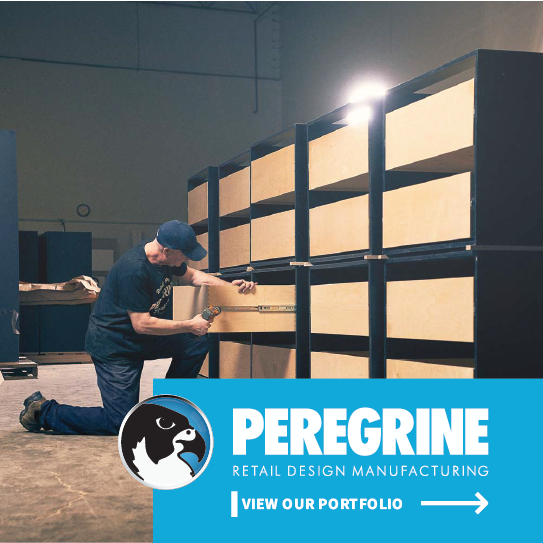Big Box Retailers Shutter Amid Lack of Innovation
/By Catriona Curran
Over the last few years we’ve heard about the ‘Retail Apocalypse’ and the end of brick and mortar stores, particularly in the United States but retailer have also been closing in Canada. Discount footwear retailer Payless hit headlines as the most recent victim of mass store closures across the US and Canada. The shoe brand joins the likes of American Apparel, Forever 21, J. Crew, Guess, French Connection, the Gap and others, all of whom struggled to keep doors open, not only because of external factors, but also because of their own failure to keep up with evolving consumer needs.
With big names across North America shuttering it’s easy to see that there’s a change happening when it comes to physical retail – but rather than putting a nail in the coffin of in-store shopping, retailers need to look at the benefits of real world consumer interactions and rethink their retail strategies to align with what people want, rather than just following the clearly outdated status quo.
It’s clear that now’s an opportune time to break the mould – and it’s not only brands trying something new, as landlords who have been housing mega tenants now find themselves with a large number of vacancies and a sudden need to switch gears to find new uses for these empty spaces. How can they generate and sustain revenue going forward? Let’s look at the current retail climate, and how brands and landlords can adapt to changing customer attitudes to not only survive, but to thrive.
THE RISE OF ECOMMERCE
Players like Amazon are cleaning up in the retail world as online shopping has become consumers’ preferred way to shop. The draw in filling virtual baskets can be attributed to: convenience, ease of purchase, competitive pricing and a wider range of products. As more and more brands establish their online presence, companies who want to set themselves apart know that they need to offer something unique to consumers and leverage the advantages offered by multichannel optimisation, whereby an online store is further enhanced by an offline counterpart – and vice-versa.
Beauty company Glossier has been a leading example of an online brand who has used offline retail to connect with consumers and offer them a chance to test products. Additionally, the company also understands the promotional power of social media and making Instagramable experiences for customers, allowing them to discuss and push products organically – an approach that is quickly becoming one of the most effective advertising streams for brands and retailers alike.
PHOTO: GLOSSIER VIA FACEBOOK
PHOTO: GLOSSIER VIA FACEBOOK
PHOTO: AMAZON.CA VIA FACEBOOK
FAILING TO MAINTAIN CUSTOMER RELATIONSHIPS
Brands need to develop strong relationships with their customers or face losing them to the next best thing. To form these relationships, brands need to be reacting to their consumers in a way that is seen to be thought-driven and thought-provoking. This is best achieved through real world, personal interactions and in-store shopping experiences that don’t need to focus solely on selling products.
To some extent the big-box store model isn’t compatible with these ideals, and big spaces packed out with shelves upon shelves of product can land big brands in big trouble. Last month in the United States, Target announced its plans to open around 30 slimmed-down stores in metropolitan locations like LA, New York and Washington, D.C., as well as on college campuses. These stores will average around 40,000 square-feet, one-third of the size of their traditional counterparts.
Not only that, but Target will also be taking a more curated retail approach to provide products that customers need and care about in each location, such as school supplies in their campus locations to ensure that they are pushing themselves in relevant markets, with relevant products.






UNDERESTIMATING COMPETITORS
The loyalty of consumers can be easily bought, and brands who are not looking at their competitors risk having their voice drowned out by them. Smart companies will evaluate the actions of their competitors to ask, ‘How can we take this one step further?’ ‘How can we do this – but better?’ So, although many retailers remain in established, large retailing spaces, they need to understand that the day will come when it takes more than product to keep their customers coming back.
NOT LISTENING TO CONSUMERS
What consumers want has changed. When baby boomers were in their highest purchasing years, they wanted products that were mass, commercial, generic and prestigious. Nowadays, however, brands need to focus on the Millennial and Gen Z spenders who prioritize locally-sourced, ethically made, environmentally friendly, artisanal, authentic and experiential commodities. Brands who listen and react to consumers are changing the game.
We’ve seen countless activist-driven videos of customers walking into stores and ditching all the unnecessary plastic used in an effort to highlight the environmental impact of excess packaging. Lush Cosmetics used this idea to launch their first Naked Store in the UK, selling package-free products on the high street. The result? This along with other initiatives have seen the retailer’s UK income rise by 26.7m (over C$46m) last year.
EXPERIENTIAL ACTIVATION IN TORONTO ONTARIO, THE HAPPY PLACE
THE 7 AT HUDSON’S BAY ON QUEEN STREET WEST IN TORONTO PHOTO: HUDSON’S BAY
THE 7 AT HUDSON’S BAY ON QUEEN STREET WEST IN TORONTO PHOTO: HUDSON’S BAY
LACK OF IMAGINATION
Experiential retail and new, innovative ways of reaching consumers are at the core of surviving the contemporary world of physical retail. If some brands had been brave enough to explore the realm of experiential retail, there may not have been so many shutters closing last year. For landlords who are caught in the closure crossfire, pop-ups and temporary retail are a great way to maintain tenancy following a shut down. These events provide exciting opportunities for locations that will not only drive foot-traffic, but also attract potential long-term tenants.
Space connector and pop-up expert pop-up go has been helping landlords to transition their spaces into pop-up hot spots, reminding them that when these vacancies come about landlords shouldn’t feel the need to fill one space with one retailer, but instead should look to create retail environments like New York City’s newly opened Hudson Yards. This more robust, forward-thinking strategy is a great way to create exciting retailing experiences with experiential stores, targeted brands and other shopping experiences all under the one roof.
Catriona moved to Toronto from Ireland in early 2016. Catriona has worked with media industry leaders across the UK and Ireland. Academically, Catriona has earned a Master’s degree in Journalism from the University of Ulster while studying in one of the UK’s top accredited media courses. She also holds a national diploma in professional practice and a Bachelor of Arts degree in Journalism with Photo Imaging.




















![L.L.Bean Continues Canadian Expansion with 1st Toronto Store [Photos]](https://images.squarespace-cdn.com/content/v1/529fc0c0e4b088b079c3fb6d/1603908990197-KDT3UNTEHFBFJF5FJ36N/L.L.Bean_Don_Mills_8.jpg)



![Retail-insider-NRIG-banner-300-x-300-V01-3[2].jpg](https://images.squarespace-cdn.com/content/v1/529fc0c0e4b088b079c3fb6d/1593476525034-QRWBY8JUPUYFUKJD2X9Z/Retail-insider-NRIG-banner-300-x-300-V01-3%5B2%5D.jpg)
![Retail-insider-NRIG-banner-300-x-300-V01-2[2].jpg](https://images.squarespace-cdn.com/content/v1/529fc0c0e4b088b079c3fb6d/1593476491497-W6OZKVGCJATXESC9EZ0O/Retail-insider-NRIG-banner-300-x-300-V01-2%5B2%5D.jpg)
![Retail-insider-NRIG-banner-300-x-300-V01-4[2].jpg](https://images.squarespace-cdn.com/content/v1/529fc0c0e4b088b079c3fb6d/1593476508900-TJG5SNQ294YNOCK6X8OW/Retail-insider-NRIG-banner-300-x-300-V01-4%5B2%5D.jpg)